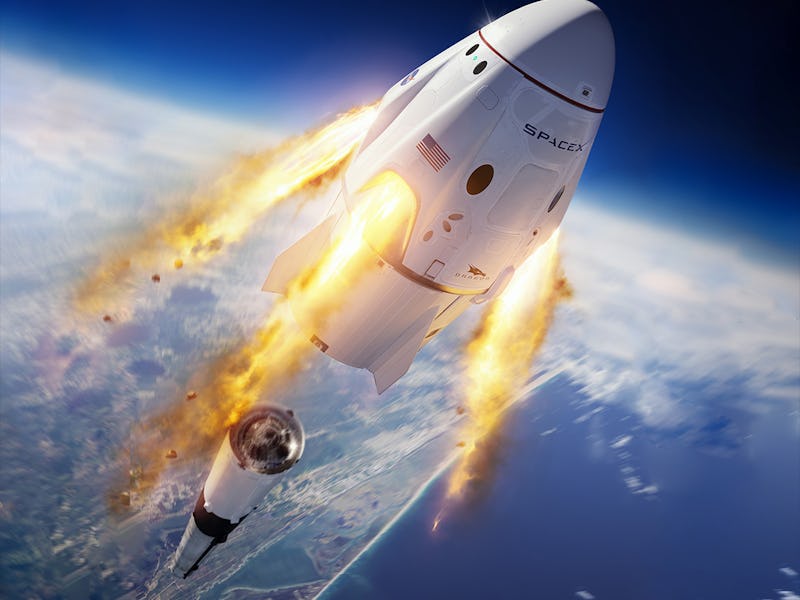SpaceX Crew Dragon: NASA's focus on the newcomer had unexpected results
SpaceX, a relative newcomer to the space industry, may have led NASA to focus its scrutiny on the Crew Dragon project.

SpaceX's Crew Dragon project may have affected NASA's Commercial Crew program in unexpected ways, it emerged Tuesday.
The space-faring firm sent up two NASA astronauts, Bob Behnken and Doug Hurley, in a Crew Dragon capsule powered by a Falcon 9 rocket on May 30. It was a major milestone for NASA's program, aimed at asking private companies to help develop a means of transporting astronauts to and from the International Space Station. Since NASA's shuttle program ended in 2011, the agency had been dependent on launches from Kazakhstan hosted by Russian agency Roscosmos.
Boeing, the other firm participating in the Commercial Crew program, has yet to launch a human. On Tuesday, the New York Times reported that the agency may have focused its scrutiny more on newcomer SpaceX, founded by Elon Musk 18 years ago, instead of 103-year-old industry giant Boeing.
Steve Stich, manager of NASA's program, said during a Tuesday press conference that "we may have been focused a little more on SpaceX because they use a bit of a nontraditional approach to their software development...and so we may have had a few more people looking at that."
Boeing suffered from two major software issues during its December 2019 launch. This mission was expected to be the final uncrewed test launch for the CST-100 Starliner capsule, ahead of its first crewed test launch. The capsule was packed with cargo and a dummy called "Rosie," destined for the International Space Station. The flight was analogous to SpaceX's successful "Demo-1" launch in March of that year.
Unfortunately, the Starliner's built-in timer suffered an error. This meant the capsule acted as if it was at a different stage of the mission, causing it to burn through its propellant. This first issue caused the team to plan for a re-entry in White Sands, New Mexico.
Boeing's CST-100
The second issue related to communications. This prevented the team from taking control of the capsule, because it was listening to a wide range of frequencies. The team was able to rectify this problem ahead of the White Sands landing, preventing it from otherwise burning up as it returned to Earth.
SpaceX's successful mission has now paved the way for the firm to take on non-test flights. Behnken and Hurley are expected to return to Earth sometime in August. This is expected to give the agency six weeks to evaluate the capsule and comb through the flight data. The agency will then send up four astronauts: Victor Glover, Michael Hopkins and Shannon Walker from NASA, and Soichi Noguchi from Japanese agency JAXA.
As for Boeing, the firm announced in April that it would complete a second uncrewed orbital flight. NASA announced Tuesday that it has made 80 recommendations to the firm to improve its capsule, including seven related to the software. The second test flight, OFT-2, has no launch date yet.
The Inverse analysis – While Boeing's failed launch has left the firm tweaking the Starliner, NASA's use of two firms means the agency still has a means of sending astronauts to the space station.
One of the major concerns with the Commercial Crew program was NASA's contract with Roscosmos. The agency had to plan for an end to the contract, which meant depending on the firms to deliver. Tensions were high in the months prior to the May 2020 launch: in September 2019, NASA administrator Jim Bridenstine described the program as "years behind schedule" the day before SpaceX unveiled its Mars-bound Starship.
The added scrutiny on SpaceX may have let some Boeing bugs slip under the radar, but NASA can at least depend on the Crew Dragon for its planned trips to the space station.
Update 07/08 9 a.m. Eastern time: An earlier version of this article stated the CST-100 landed in New Hampshire. It has since been corrected.